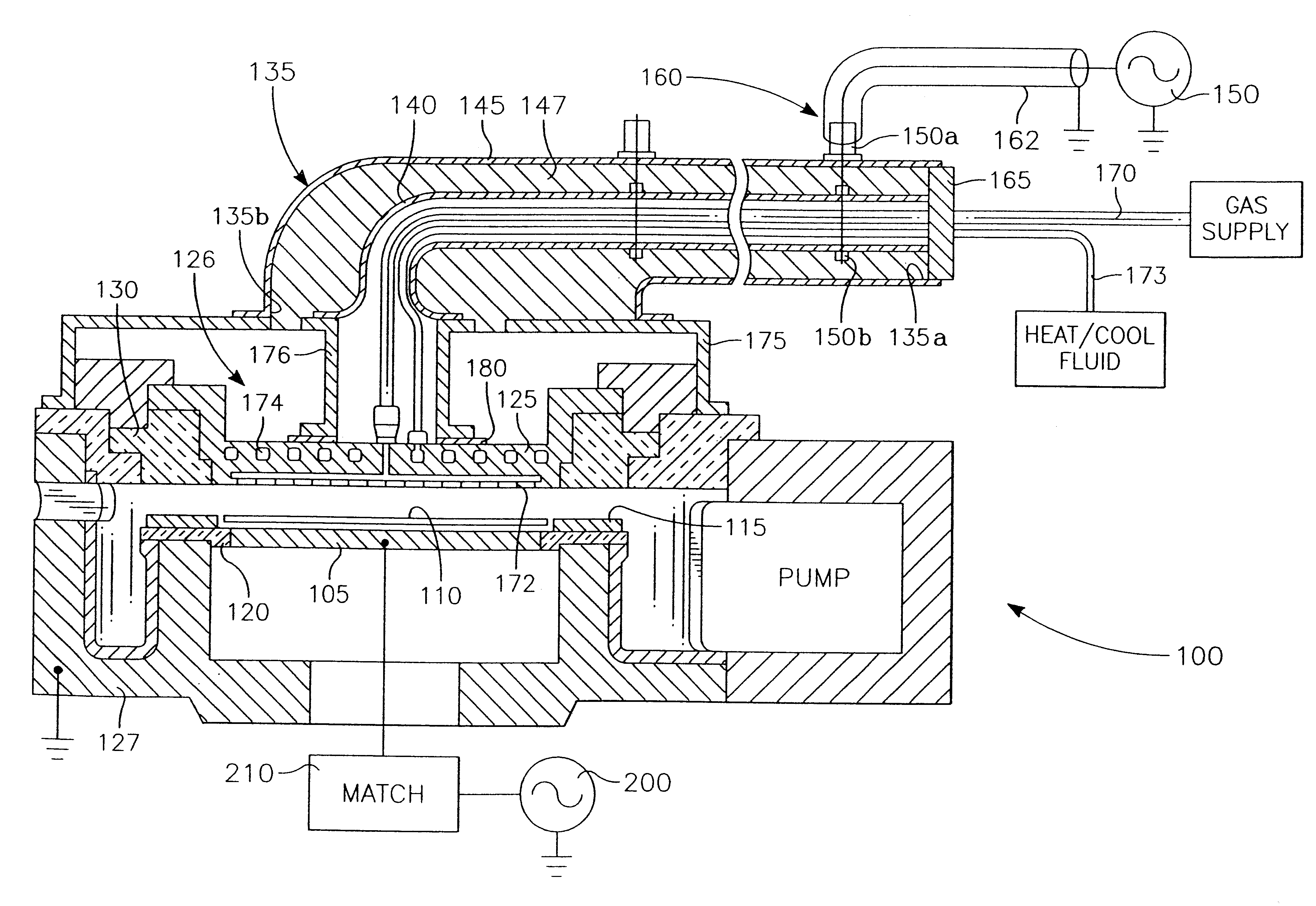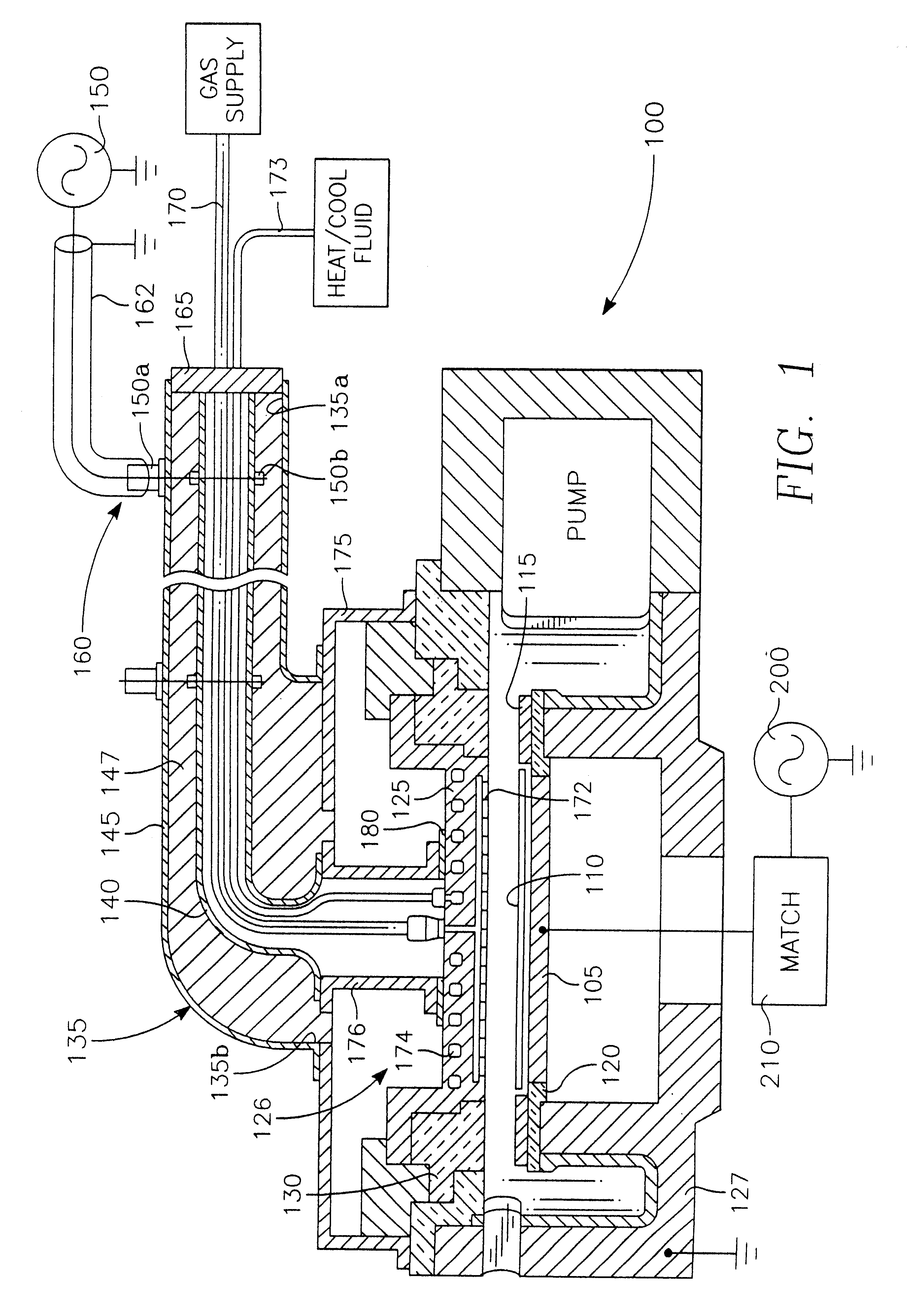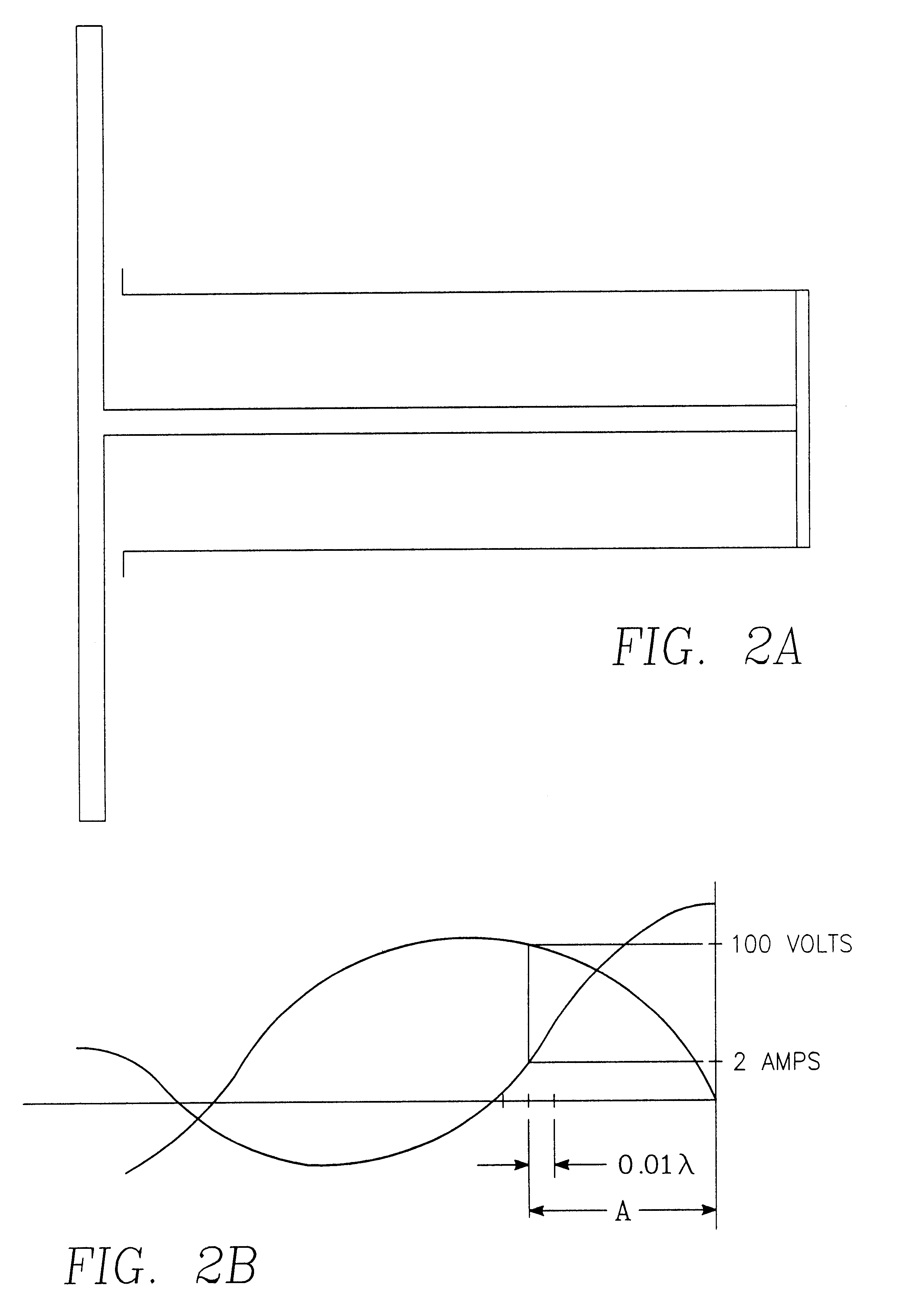Plasma reactor with overhead RF electrode tuned to the plasma
a plasma reactor and overhead rf electrode technology, applied in plasma technology, plasma production tools, electric discharge tubes, etc., can solve the problems of reducing system reliability, reducing the output impedance of the rf generator, and reducing the reliability of the system
- Summary
- Abstract
- Description
- Claims
- Application Information
AI Technical Summary
Problems solved by technology
Method used
Image
Examples
Embodiment Construction
Preferred Embodiment Overview
Referring to FIG. 1, a plasma reactor includes a reactor chamber 100 with a wafer support 105 at the bottom of the chamber supporting a semiconductor wafer 110. A semiconductor ring 115 surrounds the wafer 110. The semiconductor ring 115 is supported on the grounded chamber body 127 by a dielectric (quartz) ring 120. In the preferred embodiment, this is of a thickness of 10 mm and dielectric constant of 4. The chamber 100 is bounded at the top by a disc shaped overhead aluminum electrode supported at a predetermined gap length above the wafer 110 on grounded chamber body 127 by a dielectric (quartz) seal. The overhead electrode 125 also may be a metal (e.g., aluminum) which may be covered with a semi-metal material (e.g., Si or SiC) on its interior surface, or it may be itself a semi-metal material. An RF generator 150 applies RF power to the electrode 125. RF power from the generator 150 is coupled through a coaxial cable 162 matched to the generator 15...
PUM
| Property | Measurement | Unit |
|---|---|---|
| Frequency | aaaaa | aaaaa |
| Frequency | aaaaa | aaaaa |
| Power | aaaaa | aaaaa |
Abstract
Description
Claims
Application Information
 Login to View More
Login to View More - R&D
- Intellectual Property
- Life Sciences
- Materials
- Tech Scout
- Unparalleled Data Quality
- Higher Quality Content
- 60% Fewer Hallucinations
Browse by: Latest US Patents, China's latest patents, Technical Efficacy Thesaurus, Application Domain, Technology Topic, Popular Technical Reports.
© 2025 PatSnap. All rights reserved.Legal|Privacy policy|Modern Slavery Act Transparency Statement|Sitemap|About US| Contact US: help@patsnap.com



